Strength Training for Kayaking (Detailed Program)
Author:
Reviewed by:
(21 years of Oly Lifting experience)
Unlock your full potential by engaging with our experts and community! Have questions about your fitness journey or looking for expert advice on weightlifting techniques? Don’t hesitate — leave a comment below and Sergii Putsov will provide a personalized answer and insights to help you reach your goals.
Torokhtiy is reader-supported. Some links are affiliate links, and we may earn a commission at no extra cost to you. See our disclosure page for details.
Welcome, fellow kayaking enthusiasts! Are you eager to level up your paddling game, but not sure where to begin? Fret not!
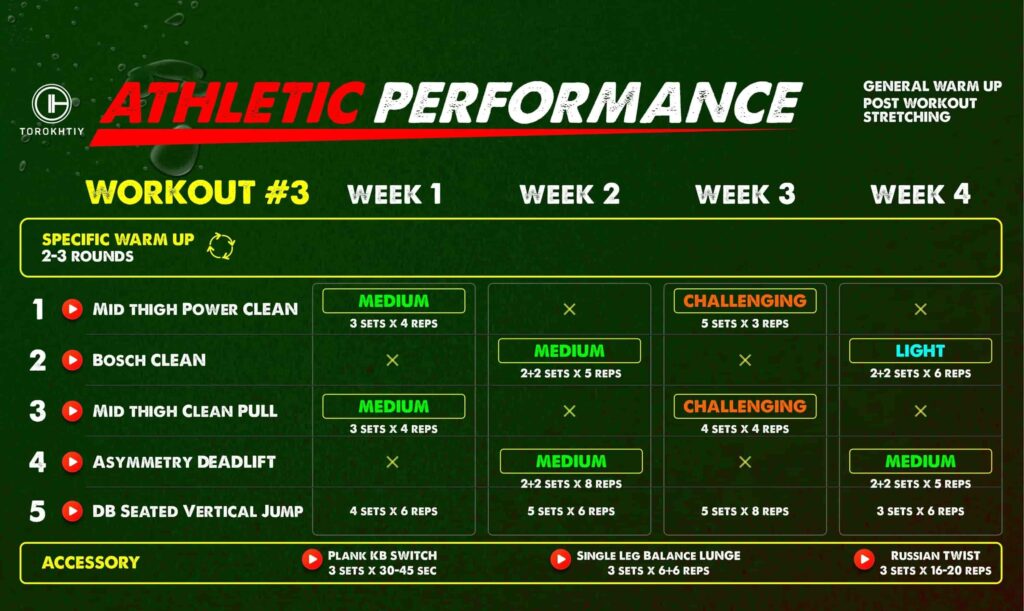
In this article, we’ll delve into the world of strength training for kayaking, and how to tailor it to elevate your performance. This essential guide will address your concerns and help you overcome challenges on the water, paving the way to enhanced endurance, stability, and control.
With our expert tips and targeted exercises, you’ll soon unlock your full kayaking potential. So, let’s jump in and get started on this exciting journey together!
Strength training, a form of exercise focusing on resistance to build muscle and increase power, offers numerous benefits for kayaking. By incorporating strength training for kayaking, you’ll improve paddling performance, endurance, stability, and more.
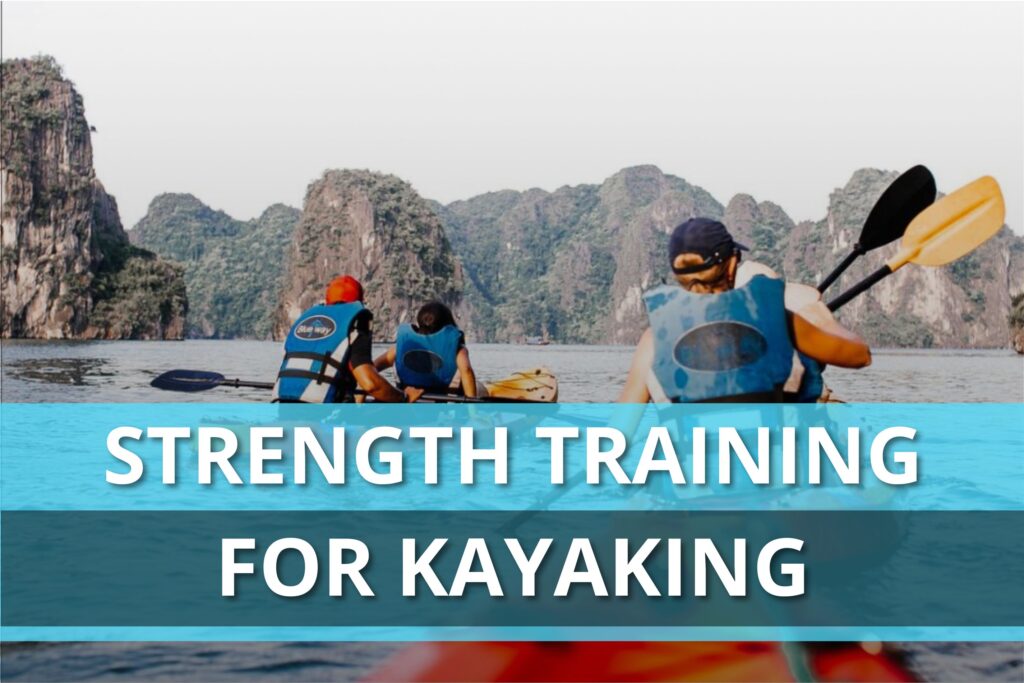
What is Strength Training for Kayaking?
Strength training for kayaking is a targeted workout regimen designed to improve paddling performance by building essential muscle groups and enhancing overall power. By engaging in specific exercises, kayakers can develop greater endurance, stability, and control on the water.
The main muscles recruited are as follows:
Core Muscles
The core muscles, including the abdominals and lower back, are crucial for maintaining balance and stability while kayaking. Strengthening these muscles improves torso rotation and power transfer from the upper to lower body.
Latissimus Dorsi
The latissimus dorsi, or “lats,” are large muscles on your back that assist in paddle strokes by pulling the paddle through the water. Strengthening these muscles can lead to more efficient strokes and increased endurance.
Forearms and Wrists
Developing forearm and wrist strength is essential for maintaining a firm grip on the paddle and preventing injuries. Stronger forearms and wrists allow for more powerful and precise strokes.
Legs
While often overlooked, the legs play a significant role in kayaking. They provide a stable base and help transfer power during paddle strokes. Strengthening these muscles improves overall performance and reduces the risk of injury.
Hip Flexors
Hip flexors are a group of muscles that allow you to lift your legs and bend at the hips. Strong hip flexors aid in maintaining proper posture and balance while kayaking, and they help transfer power from the lower to the upper body.
Triceps
The triceps, located at the back of the upper arm, help extend the arm during the paddle stroke. Developing triceps strength can lead to more powerful and controlled strokes.
Biceps
The biceps, located at the front of the upper arm, are responsible for bending the arm during paddle strokes. Strengthening the biceps can improve your stroke and reduce the risk of injury.
The Benefits of Strength Training for Kayakers
In this section, we discuss five reasons why incorporating targeted workouts and exercises for canoeing can elevate your paddling performance and overall experience. Let’s explore these advantages and their impact on your kayaking journey.
Increased Paddling Efficiency
Strength training through workouts for kayaking enables you to develop powerful and efficient paddle strokes.
By focusing on exercises that target specific muscle groups, like the core, shoulders, and back, you can increase your overall strength and maintain proper form. This translates to more fluid and effective paddle strokes, which allows you to cover greater distances with less effort.
Enhanced Stability and Balance
A well-rounded kayak strength training routine should include exercises for canoeing that target core muscles, hips, and legs. These muscles play a crucial role in maintaining stability and balance while paddling.
By strengthening these areas, you can better control your kayak in various conditions, making it easier to maneuver through choppy waters, navigate tight spaces, and maintain your balance in the face of unexpected obstacles.
Increased Endurance
One of the significant benefits of strength training for kayakers is increased endurance. By engaging in a comprehensive canoeing workout, you develop the ability to paddle for more extended periods without experiencing fatigue.
This is especially important for long-distance kayaking trips or competitive events, as well-conditioned muscles allow you to maintain a consistent pace and sustain your energy levels throughout the journey.
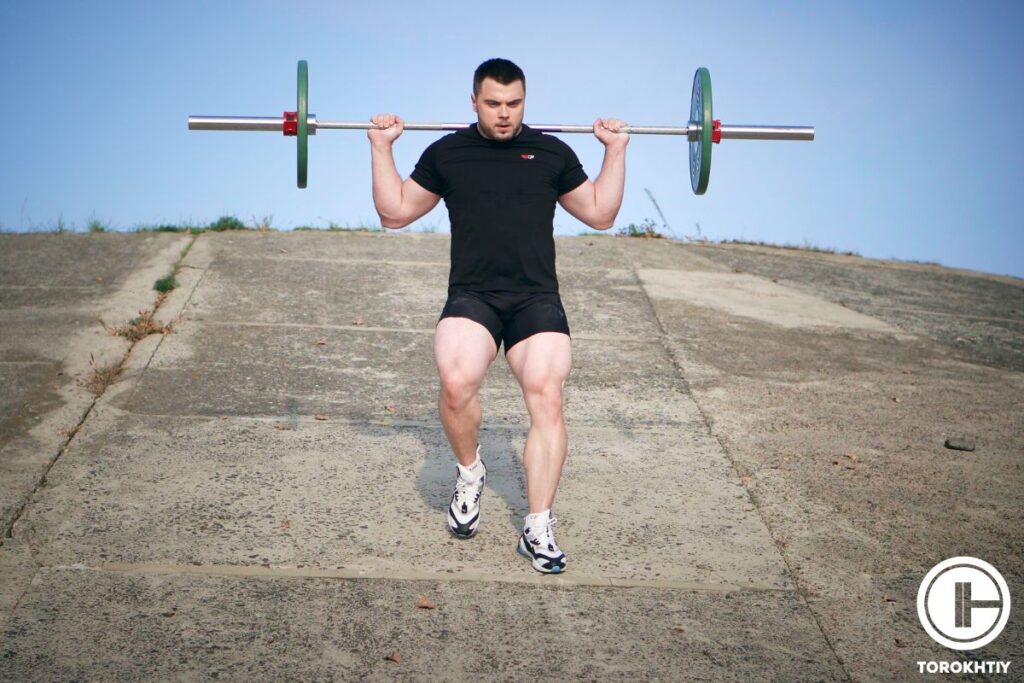
Injury Prevention
Incorporating strength training exercises into your kayak workout routine can help reduce the risk of injury. By building up the muscles that support your joints, you can better withstand the repetitive motions of paddling and lessen the strain on your body.
Additionally, a strong core and well-conditioned upper and lower body can help prevent muscle imbalances, which often lead to injuries. When you’re consistently engaging in workouts designed for kayaking, you’re not only enhancing your performance, but also ensuring your body is better prepared to handle the physical demands of the sport.
Boosted Confidence and Enhanced Mental Resilience
Strength training for kayaking not only improves your physical performance but also positively impacts your mental game. As you start to see the results of your efforts in the form of increased strength, balance, and endurance, your confidence on the water will naturally grow.
This newfound confidence can help you tackle more challenging routes or even compete in races.
Moreover, the mental discipline and focus required to complete your workouts translate to a stronger mindset during your kayaking adventures, allowing you to stay calm and collected even in difficult situations.
Follow us!

Free!
Get a 2-week Weightlifting Program as a bonus for the subscription to kickstart your training plan!

Free!
Strength Training Exercises for Kayakers
Pull-Ups
Performing pull-ups is a beneficial workout to enhance the strength of the latissimus dorsi muscle, which is a vital muscle utilized in kayaking. Furthermore, this exercise works on the biceps, forearms, and shoulders. To imitate the wider arm position used during a stroke, kayakers can practice pull-ups using a broad grip.
To Perform:
To perform a pull-up exercise, grab a pull-up bar with your hands a little wider than shoulder-width apart. Then, activate your back muscles and pull your body upward towards the bar until your chin goes above it. Return to the initial position by lowering yourself down and replicate this movement for several repetitions.
Lat Pulldowns
Lat pulldowns are an alternative version of pull-ups that you can perform using a cable machine or resistance band. This exercise focuses on the latissimus dorsi muscle, in addition to the biceps and shoulders.
To Perform:
To perform a lat pulldown, sit on a lat pulldown machine and grab the bar using a broad grip. Keep your back straight and activate your core muscles. Next, pull the bar towards your chest and contract your shoulder blades together. Gradually release the bar to the initial position and repeat this process for multiple repetitions.
Seated Row
The seated cable row is an excellent exercise for targeting the muscles in your back, shoulders, and arms, which are crucial for efficient and powerful paddle strokes.
To Perform:
To perform seated cable rows, sit on a cable row machine or attach a resistance band to a sturdy object, grasp the handle with both hands, and pull towards your abdomen while engaging your core.
Push-Ups
Push-ups are a calisthenics workout that concentrates on the chest, shoulders, and triceps. This exercise is a suitable choice for kayakers who may not have access to a gym since it can be performed anywhere without any equipment.
To Perform:
To execute a push-up exercise, begin in a plank position by placing your hands shoulder-width apart on the floor. Then, gradually lower your body towards the ground while keeping your elbows close to your sides. Push yourself back up to the initial position and perform this movement for several repetitions.
Lunges
Performing lunges is another workout that focuses on the glutes, quads, and hamstrings. This exercise can assist kayakers in enhancing their stability.
To Perform:
To perform a lunge, stand with your feet at a hip-width distance and step forward with one foot. Next, bend your body downwards towards the floor, ensuring that your front knee is in line with your toes. Push yourself back up to the initial position and switch legs to repeat the exercise.
Russian Twists
Russian twists are a core strengthening exercise that emphasizes the obliques, which are the side muscles of the abdominal area. Kayakers can benefit from performing this exercise since it can aid in improving their stroke rotation.
To Perform:
To execute Russian twists, sit on the floor with your knees bent and feet flat on the ground. Lean back slightly and lift your feet off the floor. Hold a medicine ball or weight in front of your chest. Then, twist your torso to the left and lower the weight or ball towards the ground. Move back to the center and then twist to the right. Perform this exercise for multiple repetitions.
Key Factors in Kayakers’ Strength Training Routine
In this section, we’ll highlight the essential elements that kayakers need to consider when designing a lifting program that complements their kayak training and supports their water performance goals. We’ll delve into factors such as specificity and recovery to provide insight.
Specificity
One of the most important factors to consider when developing a lifting program for kayakers is specificity. This means selecting exercises that closely mimic the movements and muscle groups used in kayaking. By focusing on exercises that target the same muscles and movement patterns, kayakers can effectively translate their strength gains to on-the-water performance.
Periodization
Periodization is the process of organizing your training program into distinct phases or cycles, each with specific goals and outcomes.
For kayakers, this may include a base-building phase to develop overall strength, followed by a sport-specific phase that focuses on exercises directly related to kayaking performance.
Planning your lifting program with periodization in mind can help you peak at the right time for competitions or challenging expeditions.
Balance
A well-rounded lifting program for kayakers should include exercises that target all major muscle groups, ensuring a balanced development of strength and preventing muscle imbalances that can lead to injury.
While it’s essential to focus on the muscles directly involved in paddling, such as the shoulders, back, and core, it’s also important to address the supporting muscles like the legs, hips, and arms.
Developing a comprehensive strength training routine will help you become a more efficient and resilient kayaker.
Recovery & Adaptation
Allowing sufficient time for recovery and adaptation is crucial when designing a lifting program for kayakers.
Incorporating rest days and lighter training weeks into your schedule helps your body recover from the physical demands of strength training and adapt to the new stresses placed upon it.
Balancing your lifting program with other forms of training, such as cardiovascular workouts, flexibility exercises, and on-the-water practice, will ensure you maintain a well-rounded fitness regimen that promotes overall performance improvement.
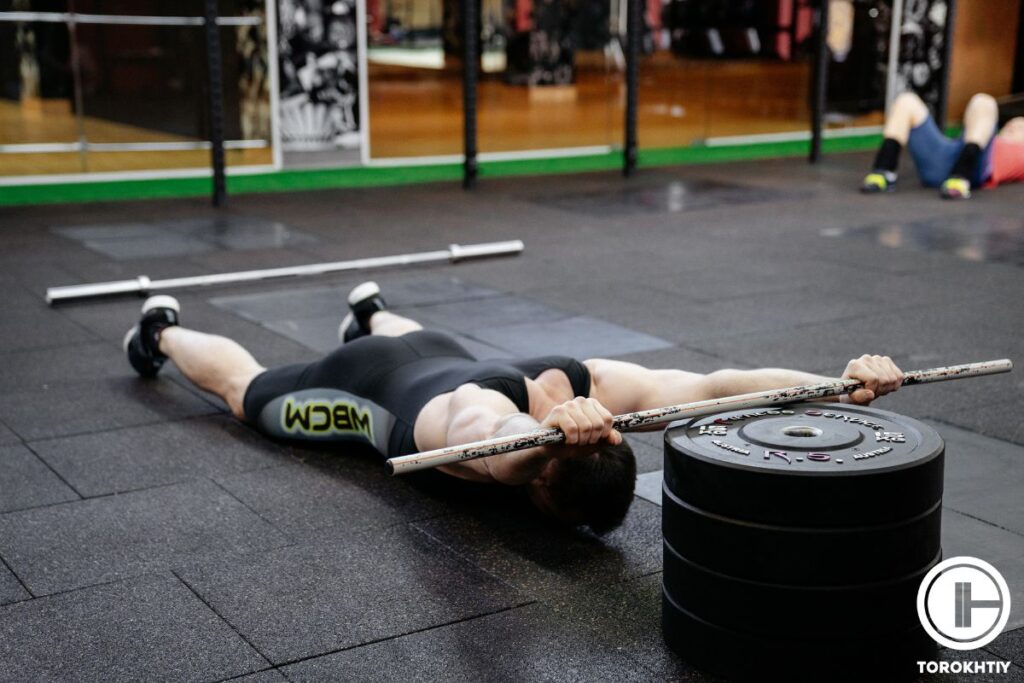
Proper Technique and Progression
Maintaining proper technique during strength training exercises is critical for kayakers to prevent injury and maximize the benefits of each movement.
Working with a certified strength and conditioning coach or an experienced training partner can help you learn and maintain correct form during your lifting sessions.
Additionally, it’s essential to progress your exercises gradually, increasing the weight or complexity of movements as you become stronger and more proficient. This approach helps you avoid plateaus and ensures a steady improvement in your kayaking performance.
Kayakers Strength Training Programming
Here’s a basic canoeing workout that incorporates some of the key exercises mentioned in previous sections. This program targets the major muscle groups involved in kayaking, with an emphasis on specificity and balanced training. Remember, kayaking is an intense full-body workout, so be sure to warm up before each workout and stretch afterward to promote recovery.
Here are two examples of programs aimed at different muscle groups:
Workout A: Upper & Core Focussed
- Exercise 1: Seated Cable Row – 3 sets of 10 reps
- Exercise 2: Pull-ups – 3 sets of 10 reps
- Exercise 3: Push-ups – 3 sets of 10 reps
- Exercise 4: Dumbbell Bicep Curl – 3 sets of 8 reps
- Exercise 5: Tricep Dips – 3 sets of 15 reps
- Exercise 6: Russian twists – 3 sets of 10 reps each side
- Exercise 7: Planks – 3 sets of 35-second holds
Save it for easy access!
Bookmark this page now to access the program and instructional videos anytime, anywhere.
Stop wasting time searching during your gym sessions.
Workout B: Lower & Core Focussed
- Exercise 1: Box Jumps – 3 sets of 10 reps
- Exercise 2: Lunges – 3 sets of 12 reps each leg
- Exercise 3: Goblet Squats – 3 sets of 12 reps
- Exercise 4: Sumo Deadlift – 3 sets of 12 reps
- Exercise 5: Machine/Band Leg Curl – 3 sets of 12 reps each side
- Exercise 6: Bicycle crunches – 3 sets of 20 each side
- Exercise 7: Side plank – 3 sets of 30-45 seconds
This can be implemented twice a week, with at least 48 hours of rest between each workout session to allow for recovery and adaptation. As you progress, adjust the weights or difficulty of exercises to continue challenging your muscles and improving your kayaking performance.
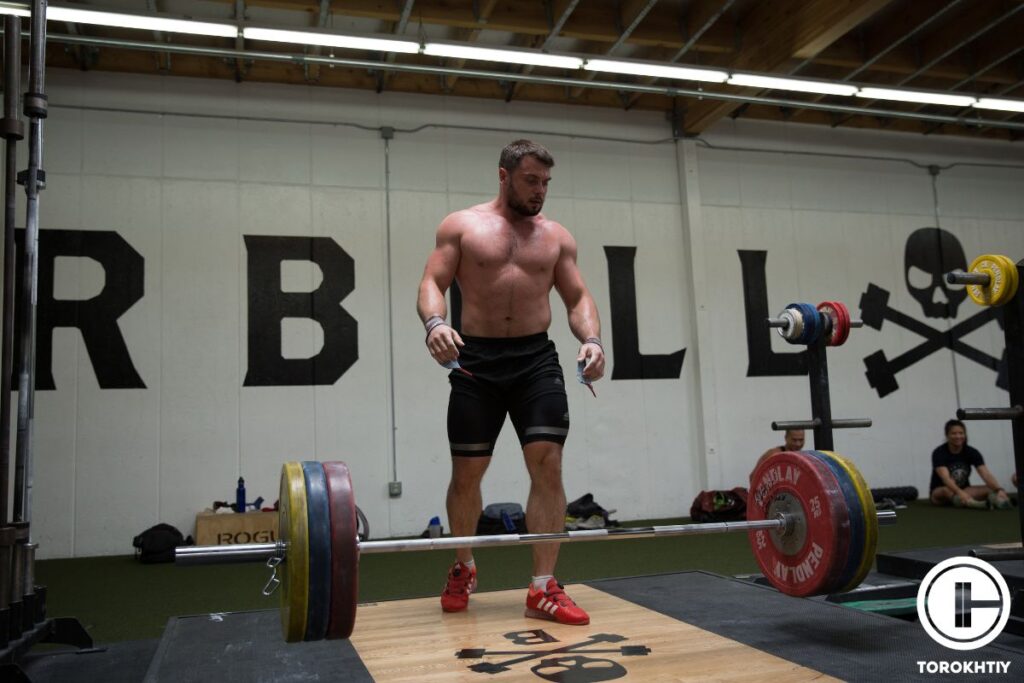
Remember to consult a certified strength and conditioning coach or a professional trainer to ensure proper technique and to get personalized guidance tailored to your specific needs and goals.
List of Equipment Needed
- Cable row machine or resistance bands
- Pull-up bar or pull-up station
- Weight or medicine ball (for Russian twists)
- Sturdy box or platform (for box jumps)
- Dumbbells
- Bench, chair, or parallel bars (for tricep dips)
- Squat rack or Smith machine (optional for squats)
- Barbell and weight plates (for deadlifts)
- Leg curl machine or additional resistance bands
- Exercise mat (for core exercises and stretching)
Certain items like a pull-up bar or resistance band can be used at home, while others like a barbell and leg curl machine may necessitate access to a fitness center or gym. It is crucial to choose equipment that is suitable for your fitness level and adhere to safety protocols while using the equipment.
FAQ
What Lifts Are Best for Kayakers?
The best lifts for kayakers include seated cable rows, pull-ups, push-ups, dumbbell bicep curls, tricep dips, box jumps, and core exercises like Russian twists and planks.
Does Weightlifting Help Kayakers?
Yes, weight lifting helps kayakers by improving strength, endurance, and overall performance on the water.
How Often Should a Kayaker Lift Weights?
A kayaker should lift weights 2-3 times per week, allowing at least 48 hours of rest between sessions for recovery and adaptation.
Conclusion
Incorporating strength training into your kayaking routine can significantly enhance your on-the-water performance. By focusing on specificity, balanced training, and proper technique, you’ll build a solid foundation for success. Don’t forget to prioritize recovery and adapt your program as you progress to continuously improve your paddling skills.
We’re eager to hear your experiences! If you’re a kayaker who has ventured into strength training, let us know how it has influenced your time on the water. Any suggestions or insights for fellow paddlers looking to add weightlifting to their routine? Share the obstacles you’ve encountered and the solutions you’ve discovered. Join the discussion in the comments section below!
Also read:
- Strength Training for Throwers
- Weight Training for Golf
- MMA Weightlifting Plan
- Strength Training for Tennis Players
- Weight Training for Rowers
- Strength Training for Cyclists
- Strength Training for Boxers
References:
- Photos made by Torokhtiy Media Team; Rachel Claire, Canva.com.
Why Trust Us?
With over 20 years in Olympic weightlifting, strength training, nutrition coaching, and general fitness our team does its best to provide the audience with ultimate support and meet the needs and requirements of advanced athletes and professional lifters, as well as people who strive to open new opportunities and develop their physical capabilities with us.
By trusting the recommendations of our certified experts in coaching, nutrition, and sports training programming, as well as scientific consultants, and physiotherapists, we provide you with thorough, well-considered, and scientifically proven content. All the information given in the articles concerning workout programming, separate exercises, and athletic performance, in general, is based on verified data.
The product testing process is described in more detail here.
Author: Sergii Putsov
Head of Sport Science, PhD
Best Results: Snatch – 165 kg,
C&J – 200 kg
Sergii Putsov, Ph.D., is a former professional weightlifter and National team member, achieving multiple medals in the 94 kg weight category at national competitions. With a Master’s degree in “Olympic & Professional Sport Training” and a Sport Science Ph.D. from the International Olympic Academy, Greece, Sergii now leads as the Head of Sport Science. He specializes in designing training programs, writing insightful blog articles, providing live commentary at international weightlifting events, and conducting educational seminars worldwide alongside Olympic weightlifting expert Oleksiy Torokhtiy.
Reviewed by: Oleksiy Torokhtiy
Olympic Weightlifting Champion, PhD in Sport Science
Best Results: Snatch – 200 kg,
C&J – 240 kg
Oleksiy Torokhtiy is a professional athlete boasting 20 years of experience in Olympic weightlifting. With multiple European and World titles under his belt, he has showcased his prowess in two Olympic Games (Beijing 2008 and London 2012). Upon concluding his illustrious career, Oleksiy dedicated himself to coaching. By 2022, he had conducted over 200 weightlifting seminars worldwide. He is the visionary behind an international sportswear and accessories brand known for its motto, “Warm Body Cold Mind.” Additionally, he is an esteemed author and the creator of a series of training programs and eBooks.




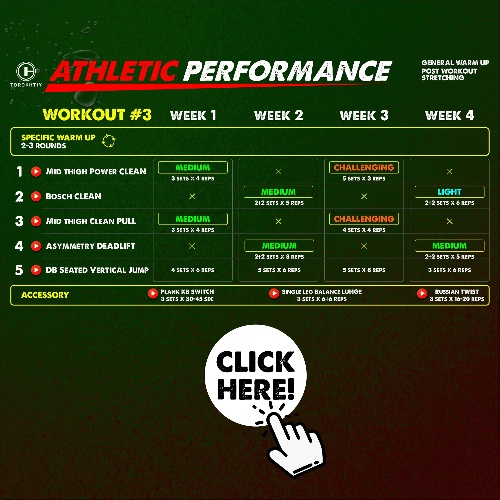


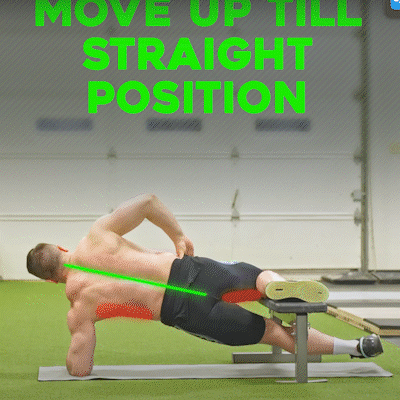
Are traditional weightlifting exercises like squats and deadlifts truly the most effective for kayakers, or are there more unconventional lifts that can better target the specific muscles needed for paddling?”,
“refusal
So your brain does not really recognize muscles. What it sees is movement and because of that if we train for specific sport we need to understand these movements.
Squats and deadlifts are indeed good strength exercises for a general strength (can improve your work capacity etc) however they don’t meet specific requirements for kayaking as it is mostly upper body rowing plus rotation.
It’s not that you should not do them cause they are awesome, but following SAID principle (specific adaptation to imposed demands) we want to mimic specific demands of our sports to get the desired adaptation.
I’d say (however it depends on your level and time in your macrocycle) generally look for exercises that will include rowing, unilateral rowing and rotational exercises that at least somehow mimic paddling (bent over row, pendlay row, single arm row, kneeling single arm cable row in split position and more) – that will challenge strength – if strength is what we are looking for in the first place.
That means lifting heavy ( rule of thumb will be 70% of 1rm or more) and low rep (up to 6 reps). Look for progression in that.
That being said I personally don’t know an athlete who would not benefit from GPP, as many folks today are looking to be very specific (SPP) too soon and they plateau quite fast. Be sure that you train movements not „muscles” as they don’t work in isolation (motor patterns, kinetic chain). Look for accessory exercises that will also challenge antagonistic muscles for a balance and joint health.
Last but not least I’d definitely look what is the limiting factor in your performance and try to identify it to make the biggest progress in with “minimal” effort.